Voni Glaves
Voni Glaves is a bonafide motorcycling legend, having ridden more than a million accident-free miles since she first started riding in the seventies. She talks to us here about the records she has broken, the changes she has seen through all her years of riding. finishing the Iron Butt Rally, and of course about what it’s like to ride in Texas.
Rashmi Tambe
Editor, Global Women Who Ride
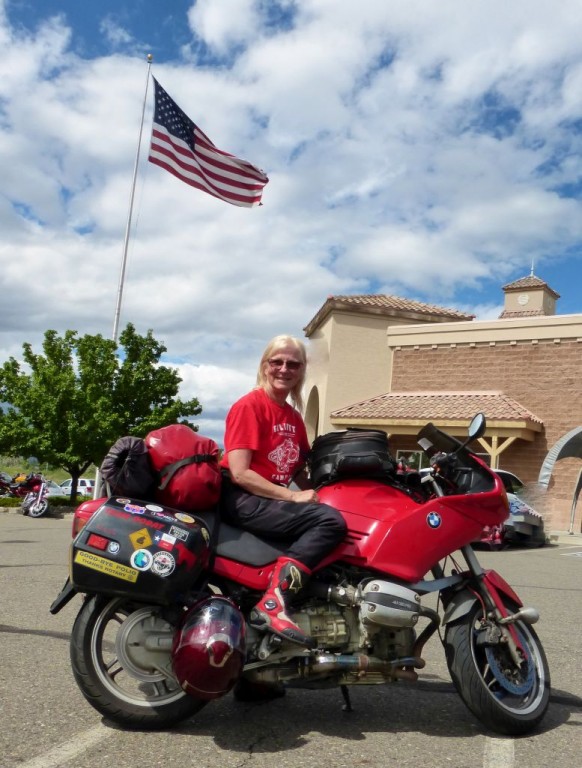
Please introduce yourself.
I’m Voni Glaves – mother, wife, sister, teacher, grandmother, and motorcycle rider. I’m retired from a career teaching students with special needs. After living in North Dakota, Minnesota, Iowa and Kansas, my husband (lover and mechanic) and I moved to the desert of Big Bend, Texas where we found a home in our Adobe in the Chihuahuan desert.
I’m one of two women (the other being Ardys Kellerman) who have documented a million miles on BMW motorcycles. My Facebook pages lists my occupation as Rider at my Second Million. I love photography, reading, hiking and horses.
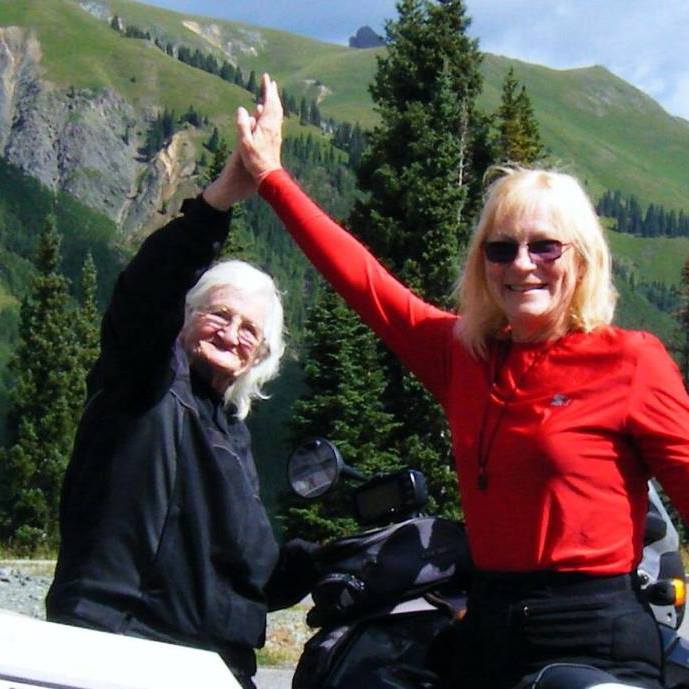
Describe your path into motorcycling.
Back in the 70s I loved riding with my husband, Paul, but with two kids we didn’t get much alone time. Paul suggested I learn to ride his Yamaha RD250 so we could take Mike and Melanie with us. I had lots of reasons why that wouldn’t work. First of all, I had never heard of a woman who rode. Secondly, his bike seemed huge and intimidating and way too shiny and new. Thirdly, I was a Mom. How could I put my life in DANGER?
I agreed to try, but on my sister’s dirt bike which all of the kids had already beat up. And in an alfalfa field because it looked like a soft place to land. I LOVED it! Soon I was piloting Paul’s Yamaha around our rented country farmstead. I promise I put a hundred miles on the odometer before I left the yard for the dangerous gravel road to the highway.
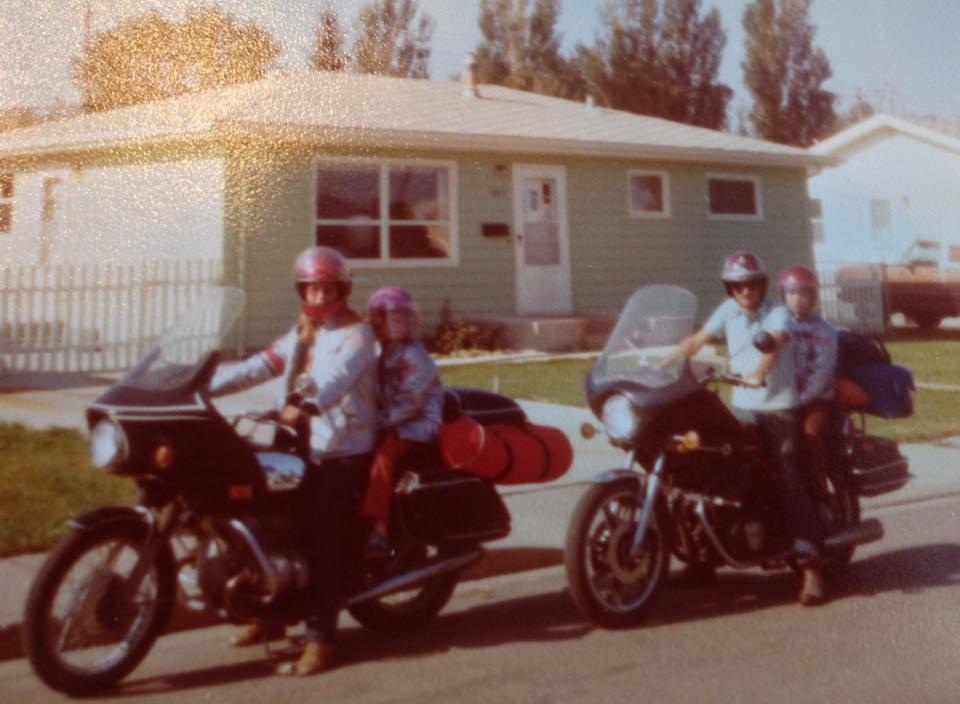
What is your first memory involving motorcycles?
A scary ride with a high school boyfriend going over 100 mph without a helmet. I made him stop and vowed to walk rather than ever ride with him again.
What bike did you first start on and why?
Past that first dirt bike, I learned to ride my husband’s Yamaha RD250. It was available. And I could flat foot it.
Describe your current motorcycle.
Actually I have four. My favorite is a ’94 BMW R1100RS everyone calls Big Red, with over a third of my million miles showing on its odometer. My K75 is over 20 years old and I call it Little Red. My newest bike is a 2007 BMW F800S I call fRed.
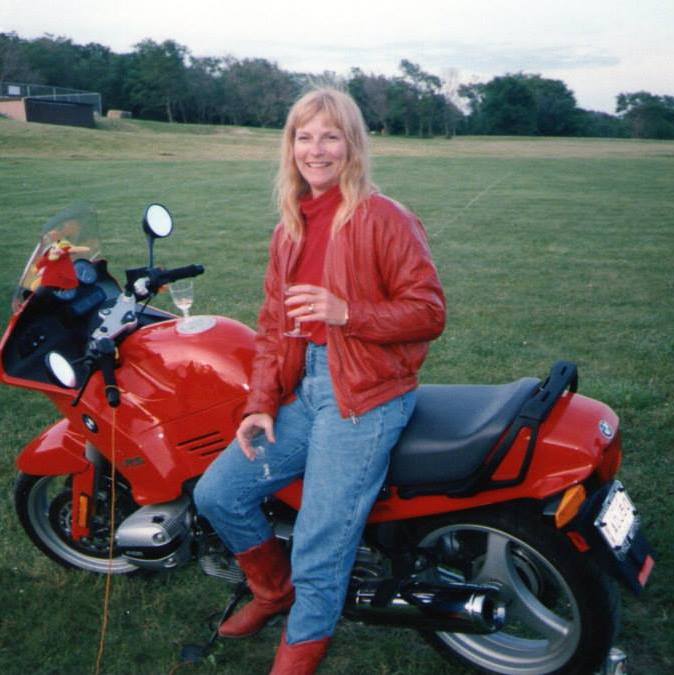
And because exploring dirt and gravel roads is a treat I have a 2000 Yamaha TW200. I love each as a tool for the kind of riding I want to do that day, and if truth be told, whatever bike I’m riding is my favorite.
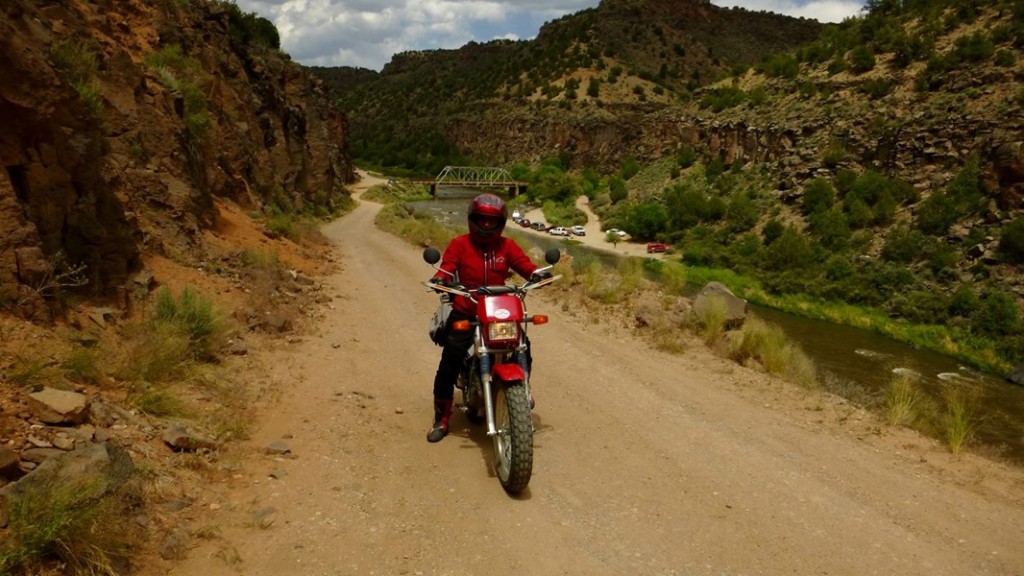
Do you have a motorcycling achievement that you take pride in?
In one sense, just riding out of the yard that first time was a huge achievement. Obviously, the million miles is a lifetime achievement. But the one I take the most pride in is riding 73,660 sMiles in six months for the BMW MOA Mileage Contest. And, finishing the Iron Butt Rally, and 11 day challenge, ranks right up there.
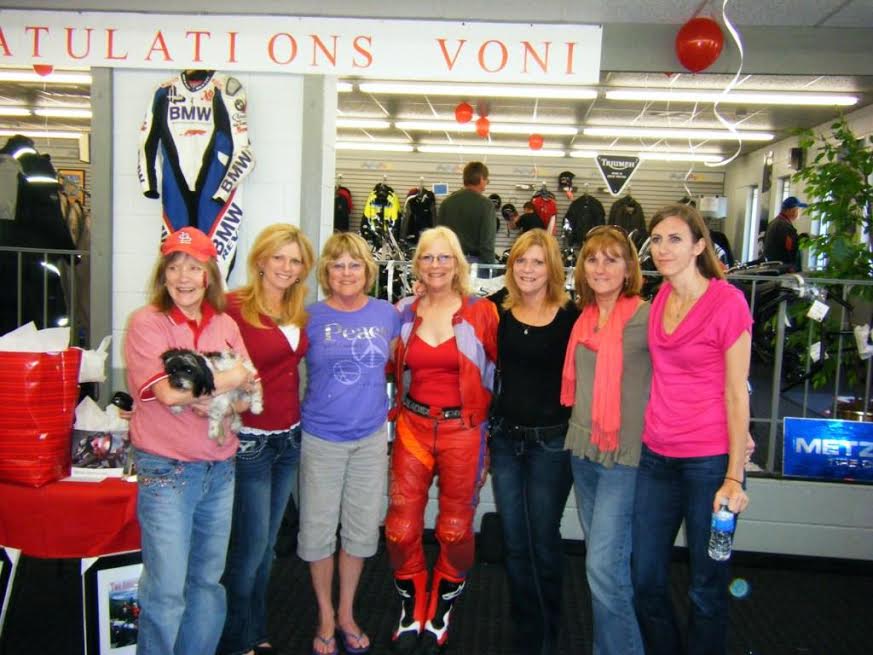
Voni Glaves with her sisters, niece, and daughter
What’s your favorite motorcycling story to tell others?
I was returning to Kansas from my first long solo trip to the Lunatic Fringe Rally in Alberta, Canada. I had camped in the city park in Choteau, Montana. After riding a few miles I stopped to check the camping gear I had strapped onto the bike. A truck drove up and it was a rancher who owned the land where I had stopped who asked if I had camped there on his land the previous night. I explained I had just stopped to check the load. He the said that he had asked because if I was camping on his land I should come up to the house for the breakfast his wife was making.
What was your favorite long distance road trip?
I’ve done lots of long distance riding over the years. It’s hard to pick a favorite. I’m thinking of a ride I did with a friend Debbie Glickley. She had just gotten married, but I held her to a promise to run away with me in the summer from Iowa to the east coast of Canada. By the time we’d turned around, we were in Newfoundland! Oh, the adventures we had. One night we were sitting in an abysmally slow restaurant waiting for lobster and missed the sunset on Prince Edward Island. That night we vowed never to let that happen again. We refused sit down restaurants and “lived off the land”, stopping at fruit and vegetable stands and bakeries for our daily meals.
Have you made any close female friendships due to motorcycling?
The best! Other than my four sisters, I found an awfully lot of women were not very good at being friends. But the women I’ve met through motorcycling are fulfilled and open and loving because they’ve found a passion in their lives. One of my favorite women rider seminars over the years was in 2012. On the panel along with me were Ardys Kellerman, Tiffany Coates, Valerie Thompson, Becky Baker, Dawn Douglas and Benka Pulko.
Do you do maintenance and repairs on your bike?
I am spoiled in that my husband Paul does all of our maintenance. People tease him that my many miles are why he’s learned to be so good! Of course, traveling solo, as I’ve done a lot, I’ve had to learn a lot of strategies to keep my motorcycle in top shape. Even checking the air in my tires was daunting, but with a special kind of air pressure gauge I’m now much more able!
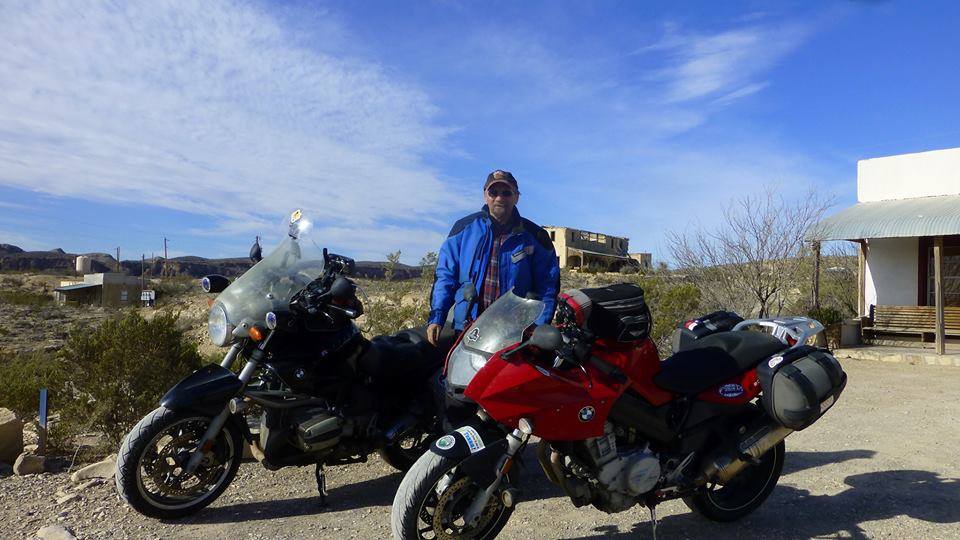
You have ridden all over the United States. What has been your favorite place to ride in and why?
There are so many great places to ride. But because it’s where we finished our million miles I’ll say the Million Dollar Highway in Colorado, from Ouray to Durango. It’s usually lightly traveled, has tight curves, big sweepers, and the most amazing views.
You have also ridden in a few other countries. How did that compare to riding in the US?
Riding in New Zealand is a lot like riding in the United States except that every great road is close to another great road. No broad flat areas at all! Speed limits are lower overall, but the roads are smaller and people seem to watch out for each other more. Riding in the southern part of Africa what I noticed immediately is that other than in cities the roads are lightly traveled and in excellent condition. Even graveled roads were well maintained. I was struck though with the reality that if I was to have an accident, help was very far away much of the time. Also, motorcycles were prohibited from riding in the National Parks. I understood that that was for my own safety when I observed lions and elephants and giraffes and hippos and rhinos and more there running free.
There’s still a big world out there. If you could ride anywhere else in the world, where would that be?
If price was no object, I’d love to tour Scandinavia, especially Norway where my grandmother came from.
Your million+ miles have been accident-free, which is truly remarkable considering the law of averages. Can you talk a little bit about how you stay safe?
I do have to acknowledge first that a huge part of that safety has been luck. You can do everything to be as safe as you possibly can and still not be able to prevent that left turner or a random deer. But from my first 100 miles in my own yard, I’ve read everything I can to increase my knowledge of safe riding practices. I’ve asked questions of riders I admire on what they do to be safe. I’ve taken classes and track schools, as well as practicing on my own, to keep my riding skills sharp. And I try not to ride except when I can fully tune in to the ride and not be distracted by emotions, tiredness, or weather. I try to stay physically fit and mentally sharp. And then I ride. A lot. And I always ride a little bit scared. If I lose that fear, I’ll quit riding.
Let’s talk about the Iron Butt Rally. For our readers who are not familiar with it, can you describe how it works and how your rally went?
Every other year since the 1980s a group of riders has gathered to compete in the Iron Butt Rally. It’s an 11 day event similar to a scavenger hunt, where close to a hundred riders, starting from the same location, ride out to take pictures and collect receipts to validate that they have visited the chosen sites and have ridden the miles to be declared a finisher. Checkpoints along the way let you score your points but do tend to break your rhythm. The winner is the one rider who collects the most points, not the fastest nor the highest milers. Finishers may earn Bronze, Silver, or Gold status based on the points they collect.
In 2002 some of my closest friends were at a BBQ in Texas where I caught the bug. Ardys Kellerman, Karol Patzer, and Phyllis Lang had each completed it multiple times, and Linda Babcock and I decided we should at least try it. They had such great stories to tell!
To prepare, I really did lots more of my favorite exercise – walking – and I did even better at eating right. And then a couple of months before the rally, Linda Babcock and I led a group of three other women riders on a Girls Just Want to Have Fun tour to Hyder Alaska. Nothing like riding low mile days in gorgeous scenery and laughing and talking with friends to get us in shape!
I describe my experience as living in an alternate reality. Nothing of my day to day worries and cares took any of my energy. My husband Paul rode his BMW K75 with a third of a million miles on the odometer and I rode my BMW R11RS which crossed 300,000 miles during the rally. Mechanically, they were close to perfect. Mentally, it was just the most challenging ride of my life.
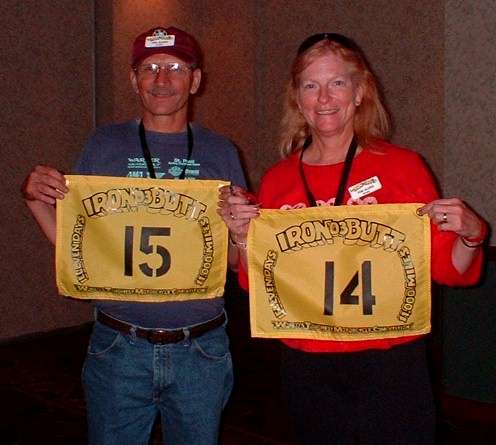
All of our energies went into plotting and planning how to score points. We did get at least four hours of sleep a night in quiet motels along the way. I need fuel every bit as much as my bike does. I planned to eat at least every four hours and with food I carried, and quick meals at Subway and McDonalds, I met that goal. We got points in the Black Rock Desert of Nevada, following a GPS location, at the top of 14,000 foot Mount Evans, rode at sunrise through Deal’s Gap with its 318 curves in 11 miles to the Tree of Shame, and made it back to Missoula, Montana for a Bronze finish. In the next two days we rode 1,500 easy miles to be back at work Monday, grinning all the way.
There were six women riders that year, and at each checkpoint we celebrated together the fact that we were still there and still riding and still incredibly happy about being in the rally.
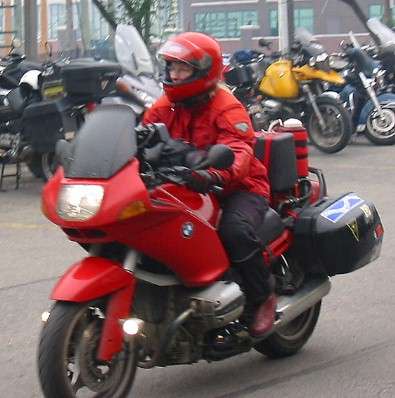
Would you move over to an electric bike should they get more suitable for long distance riding?
I would. I do hate what we have to do to have fossil fuel, though I can’t resist the RIDE.
What major changes – both positive and negative – have you noticed in the world of motorcycling in your almost 40 years of riding?
The arrival of the GPS devices to route and to keep track of where I am is probably the most important to me. The other important thing was the arrival of first more powerful, and then anti-lock brakes, which have both made for safer riding. On a personal front, I was a novelty when I first started riding. Who hasn’t been asked, “Did you ride that all by yourself?” Now women ride everywhere. I consider that a huge positive.
As for negatives, I’d say it’s the the increase in traffic and the myriad distractions of cell phones and kids and all the things drivers do when they should be attending to driving.
Have your riding habits changed at all through the years, especially with the upward progression of motorcycling technology?
I started out fearing traffic and avoiding busy cities and if anything I have done that even more over the years. The GPS lets me keep my mind on traffic and pay a lot less attention to when to turn and where to go. I do depend on paper maps and like to say Rand McNally is my favorite author as I plan the big picture before a trip.
I’ve already mentioned antilock brakes, but other improvements in motorcycle safety has played a big role. I have a tire pressure monitoring system so I have early warning of decreases in tire safety. My tires will run flat for a few miles so I can find a safe spot to leave the highway, and I can plug them myself when I do get a flat. My computer tracks miles to running out of gas so I can plan ahead.
What can manufacturers and the media do to attract women to motorcycling?
That is one area in which I’ve seen huge improvements. The respect I’m shown in a dealership has improved hugely since the day the salesman assumed I must want to buy a Honda Lawnmower instead of the Hurricane I’d come to test ride. Even my red leathers and my bike waiting in the near empty parking lot didn’t give him a clue!
Do you have any motorcycling heroes?
Of course. But everyone who rides has my respect. David Hough has probably done more to turn the odds in our favor by being, as he modestly describes it, the librarian of motorcycle safety. His articles and books are highly recommended.
Do you have any advice for people who want to get into motorcycling?
Definitely take a motorcycle safety course. But that’s just the beginning. I’d advise you to read everything you can about riding safety. Talk with other motorcyclists about what they do to keep the odds on their side. And do recognize that you are invisible to a lot of the traffic.
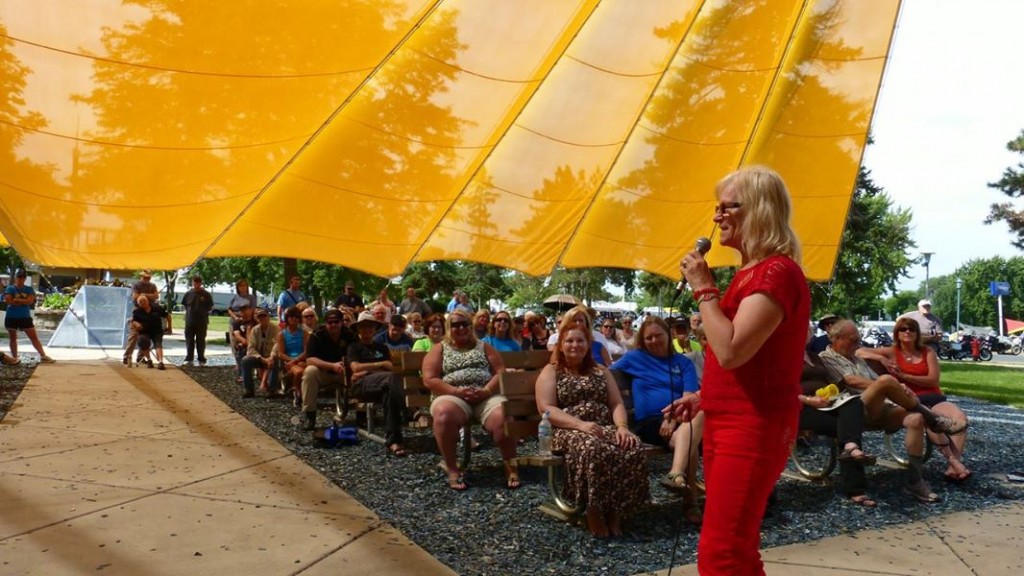
What do you think of the Global Women Who Ride Project?
I think it’s historically important because it helps answer the quintessential question of “Why do we ride?” And even more importantly, I think it allows connections, some close and some far way, in a world that seems crazy.
RIDING IN TEXAS
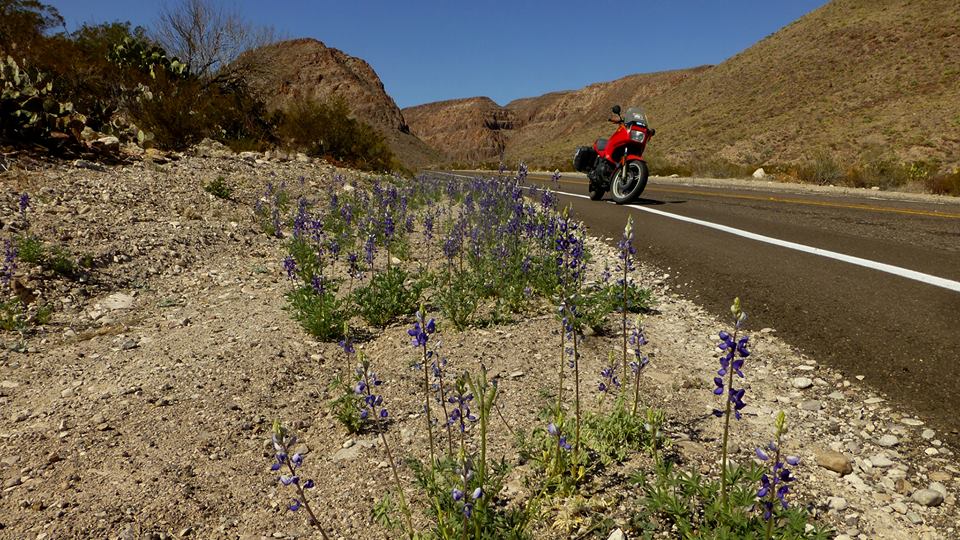
If I were to visit you and we went riding for one short morning ride, where would you take me?
I’d take you to the River Road to Presidio, about 200 miles round trip from my home. The road south to Terlingua curves over mountains and arrives in Study Butte, a small town with services for the people who visit Big Bend National Park. We’d turn west and ride the five miles to the Terlingua Ghostown where we’d stop at the Porch to listen to some music and meet some of our local characters. But the road calls, so we’d drive the 12 miles to Lajitas, another of our treasures.
As we wind out of there, the road begins to twist and turn with unexpected vistas constantly appearing. The River Road is one of the highest rated in the state of Texas for its grandeur. Following the Rio Grande it traverses Big Bend Ranch State Park. Too many sights to list here, but by the time we’ve turned around in Presidio, we’d be ready for the fabulous Tex Mex offerings of the many local restaurants. We’d talk about what we’d passed and places we’d like to stop to explore further. And then we’d turn around and do it again!
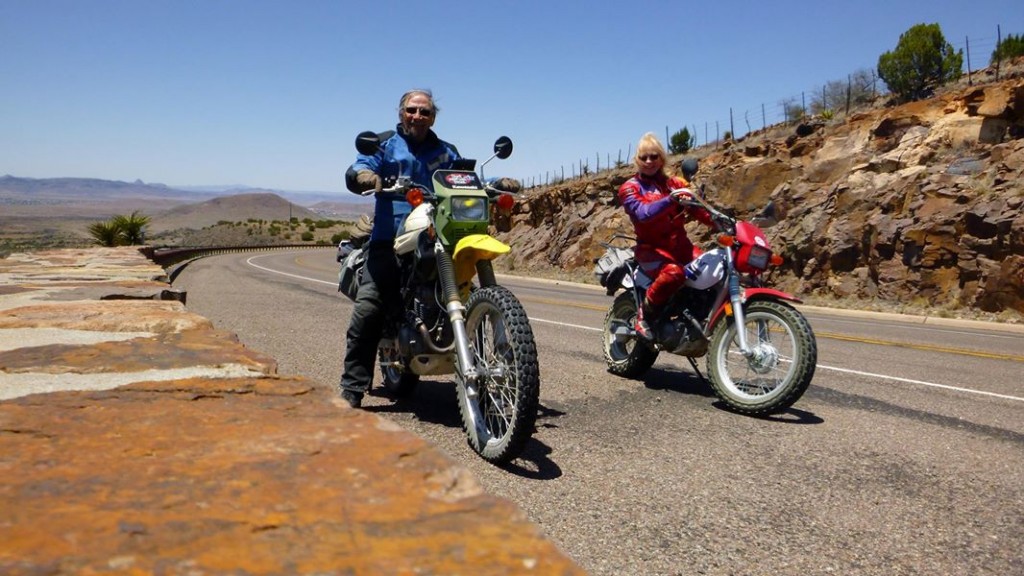 ‘
‘
What’s the best part about riding in your state?
Texas has every kind of road and riding experience in its four regions: http://www.texasalmanac.com/topics/environment/physical-regions-texas.
The Gulf Coast Plains, the Interior Lowlands, the Great Plains, and the Basin and Range Province with its mountains where we live. The trees, fruits and flowers are so varied, but everyone knows about the wildflowers in the spring which smothers the roadsides and medians of the roads with red, orange and yellow Indian Paintbrush, the bluest Bluebonnets and varied yellow and multicolored flowers. Even in the desert there are flowers almost any time of the year if you look hard enough.
What kind of food can riders expect to stop for on the way that is typical to your region?
You’ll find every kind of food and the best of it in Texas, but we’re probably best known for our Tex Mex foods blending the best of Mexico and Texas style cooking. And BBQ. And chili. But you do know if it has beans, it’s not really chili.
If a motorcyclist from another country visited your state, what are the top rides you would recommend?
The Hill Country, The Davis Mountains, The Big Bend, the Gulf Coast, and so much more.
How does the topography of the place you live affect the kind of motorcycling you choose to do?
Curves are abundant so I enjoy the open road. But where we live in the Big Bend of Texas, there are 2,000 miles of dirt and gravel roads that lead to the most amazing views. That means a smaller dirt bike was needed to really enjoy it since my street bikes involved lots more concentration of the road surface and lots less appreciation of those unique surroundings.
What is the traffic like and how does it affect motorcycle riding?
Traffic in the Big Bend of Texas is very light. Our nearest small town is 25 miles south and I seldom meet a car in that stretch. If you break down, cell phones can’t be counted on to work since it’s so remote. And the nearest hospital is 55 miles north. Caution and planning are important. But it’s much freer since I don’t have to worry at all about urban congestion and its accompanying dangers.
What are the best months for riding?
Almost any month all year long has special treats, though the summer months are very hot so early morning or evening are better times for riding then.
Is it safe to ride at night where you live?
Not really, as we have lots of wild animals crossing the road, including the occasional rattlesnake.
Is motorcycle theft a problem?
That would be very rare.
Are there any motorcycle specific laws?
You must wear a helmet, eye protection, and display a headlight. There is a requirement for a yearly safety inspection. A complete list is here:
http://www.americanmotorcyclist.com/Rights/State-Laws.aspx?stateid=43
Are there any motorcycling related political issues that affect your ability to riding?
All of the roads in Big Bend National Park and in Big Bend Ranch State Park are open to licensed motorcycles if they are open to automobiles, so no, not in our area.
How do the police treat motorcyclists?
With respect. And I’d say car drivers too. Our low population and hard terrain encourage that respect.
Can you describe the motorcycle license test?
You must pass both a knowledge test and a riding test unless you have taken an approved motorcycle riding class. More here: http://www.txdps.state.tx.us/DriverLicense/motorcyclelicense.htm.
Do you have access to high quality motorcycling gear in your part of the world?
We do, but it is via mail order or internet order or a long motorcycle ride.
Is there a local motorcycling event that you try and attend regularly?
We have several motorcycle clubs throughout Texas that visit the Big Bend of Texas. We try to meet up with them for dinner or they drop by our Adobe to visit.
Are any motorcycle related sports popular where you live and do women actively participate in them?
Riding the dirt and rock roads are challenging and by my observation, though women are welcome to join, few do.
How are women motorcycle riders treated by most people?
Mostly very well. I’ve been encouraged from the very first by most people, and especially guys I meet. If anything, it’s been disheartening to hear all of the concern from people who are sure I’m doing something very dangerous. Their concern is very real but life is dangerous.
Do female and male motorcyclists have the same amount of freedom to pursue motorcycling activities?
I surely think so. That is one thing that has changed a lot since I started riding in the 70s.

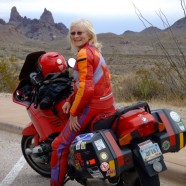





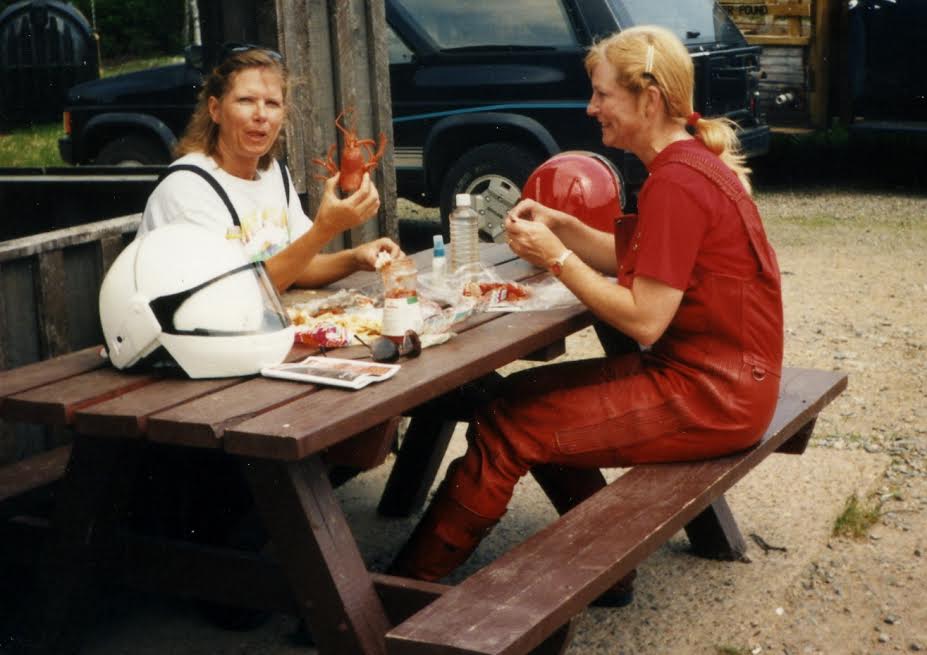
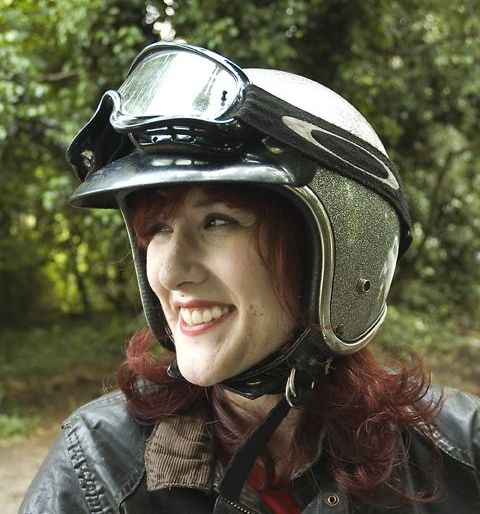
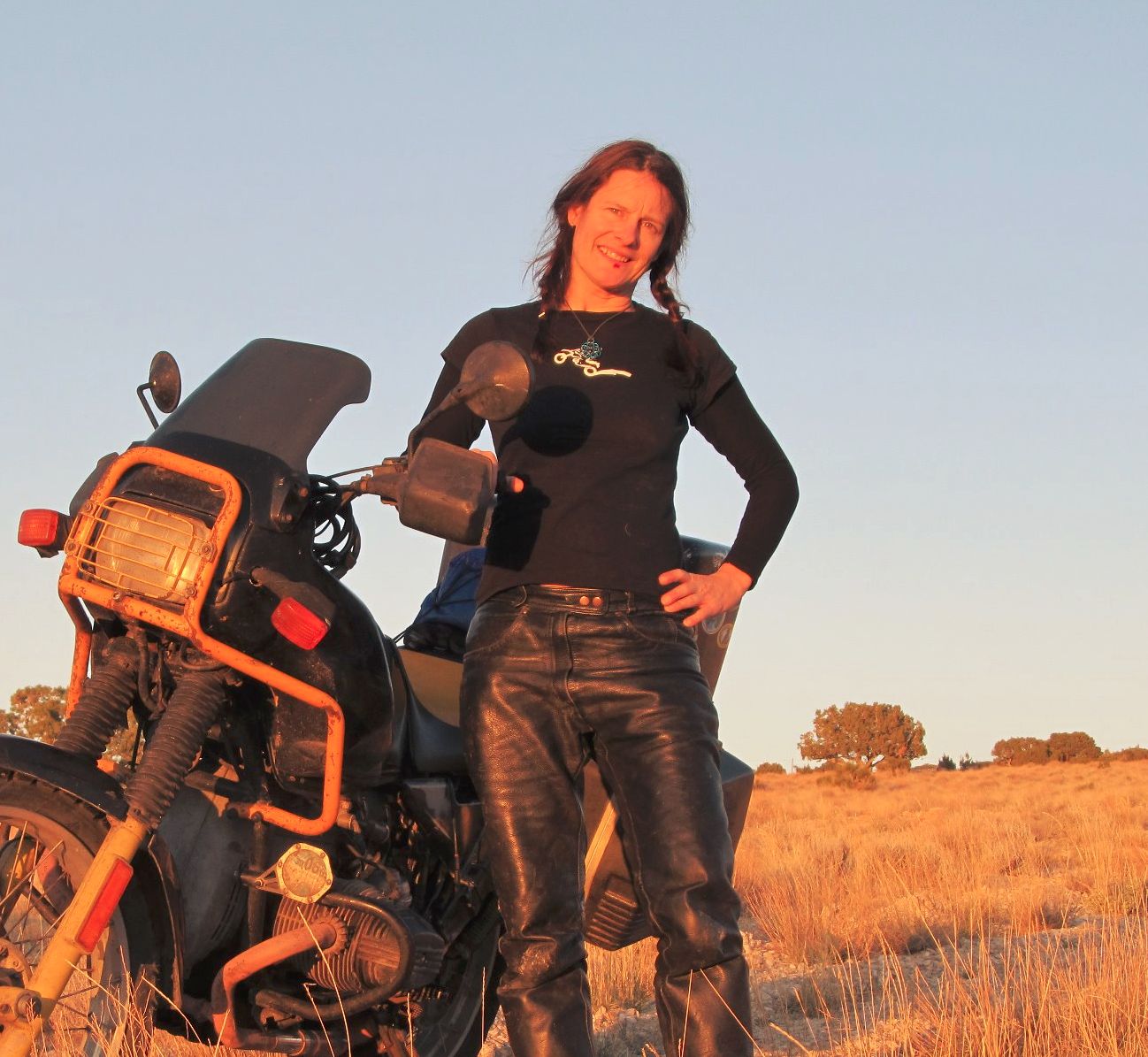
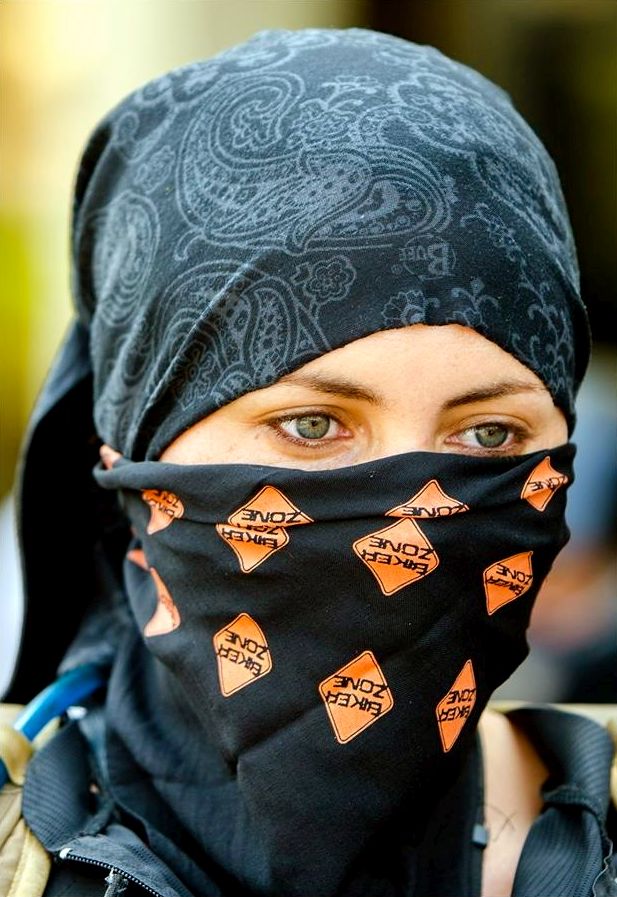
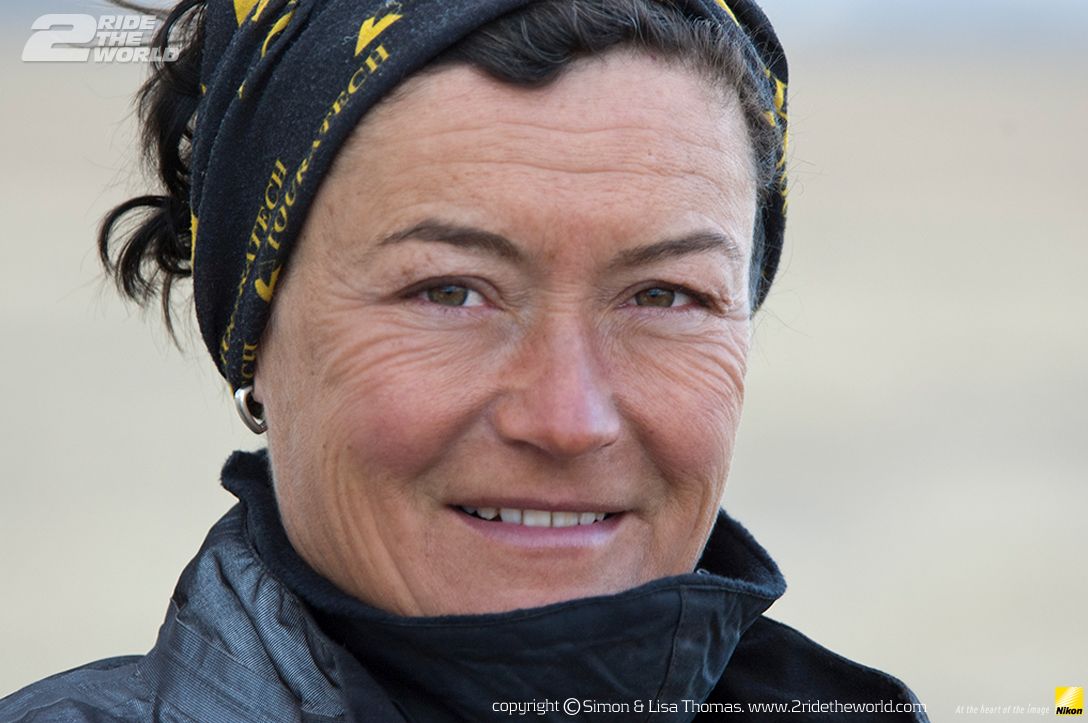
You are so cool :)